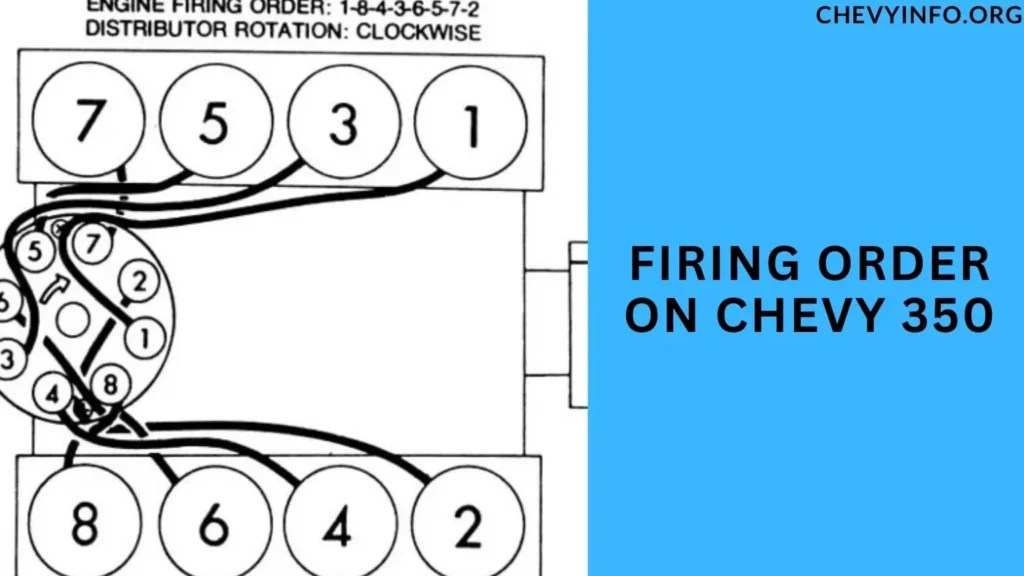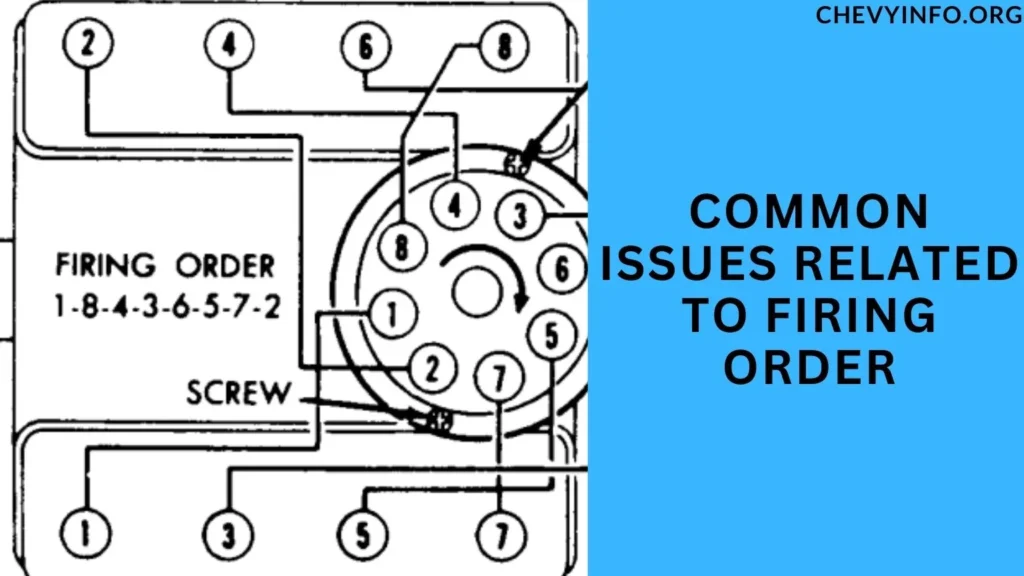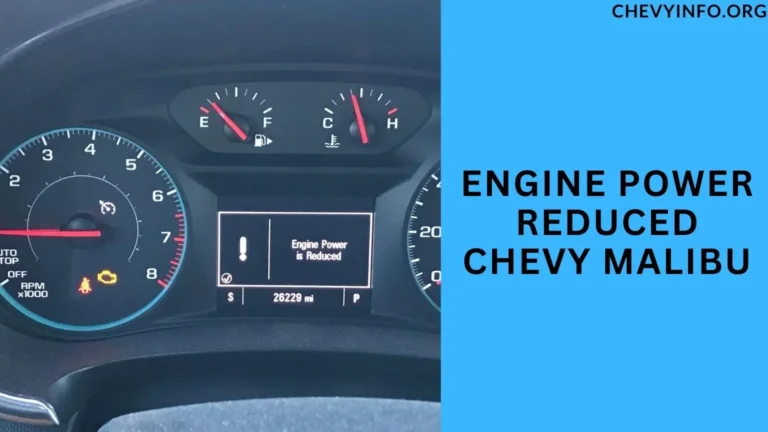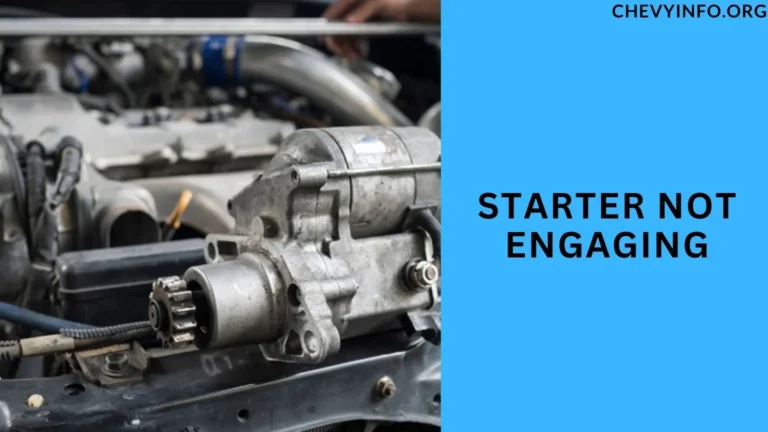Firing Order on Chevy 350 (Explained with Diagram) of 2024
Firing order plays a crucial role in the operation and performance of an engine, especially in the case of iconic engines like the Chevy 350.
Firing Order on Chevy 350, This article dives into the intricacies of firing order, its significance in engine functionality, common configurations, troubleshooting, and maintenance tips.

Introduction to Firing Order
Before delving into the specifics of the Chevy 350 engine, it’s essential to understand what firing order entails.
In simple terms, firing order refers to the sequence in which cylinders in an engine ignite the fuel and air mixture during the combustion process. This sequence is critical for engine balance, smooth operation, and optimal power output.
History of Chevy 350 Engine
The Chevy 350 engine holds a revered status in automotive history. Known for its durability, versatility, and performance, the Chevy 350 has been a staple in various vehicles for decades.
Its compact design and robust construction have made it a favorite among car enthusiasts and mechanics alike.
Understanding Firing Order on Chevy 350
The firing order on a Chevy 350 follows a specific pattern that ensures efficient combustion and engine operation.
Typically, the firing order for a Chevy 350 V8 engine is 1-8-4-3-6-5-7-2, with the cylinders numbered consecutively in a clockwise rotation. This arrangement is designed to optimize engine balance and reduce vibrations.
Firing Order Configurations
While the 1-8-4-3-6-5-7-2 firing order is standard for Chevy 350 engines, variations exist depending on factors like camshaft design and performance modifications.
Some configurations, such as the 1-3-7-2-6-5-4-8 order, are used in specific applications to enhance torque or horsepower.
However, it’s crucial to consult engine specifications or manuals for the correct firing order.
Importance of Correct Firing Order

Maintaining the correct firing order is paramount for engine efficiency and longevity. Incorrect firing order can lead to misfires, reduced power, engine overheating, and potential damage to internal components.
Engine enthusiasts and mechanics need to adhere to the recommended firing order for optimal performance.
The firing order significantly influences Chevy 350 engine performance across various metrics.
Power Output
The correct firing order contributes to consistent power delivery, especially at different RPM ranges, enhancing overall performance and drivability.
Fuel Efficiency
Optimized firing order promotes efficient fuel combustion, leading to improved fuel economy and reduced emissions, aligning with modern environmental standards.
Smooth Operation
Balanced firing order results in smoother engine operation, reduced vibration, and enhanced reliability, translating into a more enjoyable driving experience.
How to Determine Firing Order?
Identifying the correct firing order on a Chevy 350 engine involves referencing the engine’s specifications or markings.
Additionally, using a timing light and following a systematic approach can help verify the firing order and make necessary adjustments if needed. Proper identification and adjustment ensure smooth engine operation and performance.
Here are the steps to determine the firing order:
Consult the Manufacturer’s Specifications
Start by referring to the manufacturer’s specifications for your specific engine model. The firing order is often provided in the engine manual or on the engine itself, typically near the distributor or on the intake manifold.
Identify Cylinder Numbering
Locate the cylinder numbering system for your engine. Most V-type engines, including the Chevy 350, have cylinders numbered consecutively on each bank. For example, in a V8 engine, cylinders are usually numbered 1-2-3-4 on one bank and 5-6-7-8 on the other.
Locate the Distributor Cap
If your engine has a distributor cap, remove the cap carefully to expose the rotor underneath. The distributor cap is often marked with cylinder numbers corresponding to the firing order.
Observe the Rotor Position
With the distributor cap removed, observe the position of the rotor. The rotor rotates inside the distributor housing and contacts each spark plug wire in the correct firing order sequence.
Check Timing Marks
Some engines may have timing marks or indicators on the harmonic balancer or timing cover. These marks can help you determine the position of the engine’s crankshaft, which is crucial for setting the correct firing order.
Use a Timing Light (Optional)
If available, use a timing light during the process. A timing light flashes each time the spark plug fires, allowing you to verify the firing order visually. Connect the timing light to the spark plug wire of cylinder 1 and observe the timing marks while cranking the engine.
Follow the Firing Order Sequence
Once you have identified cylinder numbering, distributor position, and timing marks, follow the firing order sequence specified for your engine. The firing order is a specific sequence in which spark plugs fire in each cylinder.
For example, the firing order for a Chevy 350 V8 engine is commonly 1-8-4-3-6-5-7-2, where cylinder 1 is typically at the front of the engine on the driver’s side.
Verify and Adjust if Necessary
After confirming the firing order sequence, double-check the connections between the distributor cap, rotor, and spark plug wires. Ensure each wire is correctly routed and securely connected. If needed, make adjustments to align the firing order correctly.
Test Engine Operation
Start the engine and listen for smooth operation. A correctly set firing order should result in steady idling and balanced engine performance. Monitor for any signs of misfiring or irregularities that may indicate an incorrect firing order.
Common Issues Related to Firing Order

Incorrect firing order can manifest in various symptoms, including rough idling, loss of power, backfiring, and engine misfires.
These issues often indicate a need to check and correct the firing order to prevent further damage and restore engine performance.
Regular inspections and timely adjustments can mitigate potential problems related to firing order.
Here are some common issues associated with firing order:
Rough Idling
An incorrect firing order can lead to rough idling, where the engine feels unstable or vibrates excessively when idling. This can be caused by cylinders firing out of sequence or misfires due to incorrect timing.
Loss of Power
Incorrect firing order can result in a noticeable loss of power, especially during acceleration or under load. This is because cylinders may not fire in the optimal sequence, impacting engine efficiency and performance.
Backfiring
Backfiring, which is the sudden expulsion of unburned fuel through the exhaust system, can occur when the firing order is incorrect. This can lead to loud noises and potential damage to the exhaust system or catalytic converter.
Engine Misfires
Misfires, where cylinders fail to ignite the fuel and air mixture properly, are common with an incorrect firing order. This can cause irregular engine operation, reduced fuel efficiency, and increased emissions.
Increased Fuel Consumption
An engine with an incorrect firing order may consume more fuel than usual due to inefficient combustion. This results in decreased fuel economy and higher operating costs over time.
Engine Overheating
In some cases, an incorrect firing order can contribute to engine overheating. This occurs when cylinders fire at improper intervals, leading to inefficient cooling and elevated engine temperatures.
Poor Engine Performance
Overall, an engine with an incorrect firing order will exhibit poor performance characteristics. This includes sluggish acceleration, hesitation, uneven power delivery, and overall reduced drivability.
Potential Damage to Engine Components
Prolonged operation with an incorrect firing order can cause damage to various engine components.
This includes damage to spark plugs, ignition system components, exhaust valves, and even internal engine parts like pistons and bearings.
Increased Emissions
A poorly firing engine due to an incorrect firing order can result in higher emissions output. This contributes to environmental pollution and may lead to compliance issues during emissions testing.
Diagnostic Challenges
Identifying the root cause of engine problems becomes more challenging when dealing with issues related to firing order.
Proper diagnosis often requires checking multiple components, including ignition timing, spark plug condition, and fuel system health.
Tips for Maintaining Proper Firing Order

To ensure the Chevy 350 engine operates at its best, regular maintenance and periodic inspections are crucial.
Checking and adjusting the firing order during tune-ups or servicing can prevent performance issues and extend the engine’s lifespan.
Consulting professional mechanics or referring to reliable resources can provide comprehensive guidance on maintaining proper firing order.
Here are some tips to help you ensure the firing order remains correct:
Refer to Manufacturer Specifications
Always refer to the manufacturer’s specifications for your specific engine model. The firing order information can typically be found in the engine manual or on labels under the hood.
Use Quality Ignition Components
Invest in quality ignition components such as spark plugs, spark plug wires, distributor caps, and rotors. High-quality components ensure reliable ignition and help maintain the correct firing order.
Regular Inspection and Tune-Ups
Schedule regular engine inspections and tune-ups to check the condition of ignition components and verify the firing order. Replace worn-out or damaged parts promptly.
Consult Professional Mechanics
If you’re unsure about the firing order or encounter engine performance issues, consult professional mechanics or engine experts. They can provide accurate guidance and ensure the firing order is correctly set.
Use Timing Lights for Verification
When adjusting or verifying the firing order, use a timing light. A timing light helps you accurately determine the timing of ignition events and ensures the firing order is aligned with the engine’s specifications.
Follow Sequential Wiring
When connecting spark plug wires to the distributor cap, follow a sequential wiring pattern based on the firing order. Start with cylinder 1 and continue in the correct order to maintain the proper firing sequence.
Avoid Mixing Up Wires
Pay attention to wire routing and avoid mixing up spark plug wires. Incorrectly routed wires can lead to misfires and disrupt the firing order.
Check Timing Marks
Use timing marks on the engine’s harmonic balancer or timing cover to verify the correct position of the crankshaft. Aligning the timing marks ensures the engine is at the correct timing for the firing order.
Update Firing Order for Modifications
If you make modifications to the engine, such as installing a new camshaft or ignition system, ensure the firing order is compatible with the new components. Update the firing order settings accordingly.
Monitor Engine Performance:
Regularly monitor engine performance indicators such as smooth idle, consistent power delivery, and fuel efficiency. Any deviations from normal operation may indicate an issue with the firing order.
People also ask
What is the firing order for a Chevrolet 350?
The firing order for a Chevrolet 350 V8 engine is typically 1-8-4-3-6-5-7-2.
What is the firing order for a 5.7 Chevy?
The firing order for a 5.7 Chevy (Chevrolet 350 V8 engine) is 1-8-4-3-6-5-7-2.
What is the correct ignition timing for a Chevy 350?
The correct ignition timing for a Chevy 350 engine typically ranges from 8 to 12 degrees Before Top Dead Center (BTDC) at idle speed,
depending on factors such as fuel quality, engine modifications, and operating conditions.
It’s recommended to consult the engine’s specifications or a professional mechanic for precise timing adjustments.
Where are the timing marks on a 350 Chevy?
The timing marks on a Chevy 350 engine are typically located on the harmonic balancer, which is attached to the front of the crankshaft.
These marks align with a timing pointer mounted on the engine block or timing cover, indicating the position of the crankshaft in relation to ignition timing.
Conclusion
In Conclusion, Understanding the firing order on a Chevy 350 engine is fundamental for optimizing performance and preventing engine issues.
By adhering to the correct firing order, performing regular maintenance, and addressing any related issues promptly, engine enthusiasts can enjoy a smooth and reliable driving experience.

Henry Worner, a seasoned automotive expert with over 13 years of experience in car repair, maintenance, and performance enhancement, ChevyInfo.org was born out of a passion for Chevrolet vehicles. Henry’s deep-rooted love for everything Chevy has driven him to create a platform where fellow enthusiasts, car owners, and anyone interested in Chevy cars can find valuable insights, tips, and guidance.






